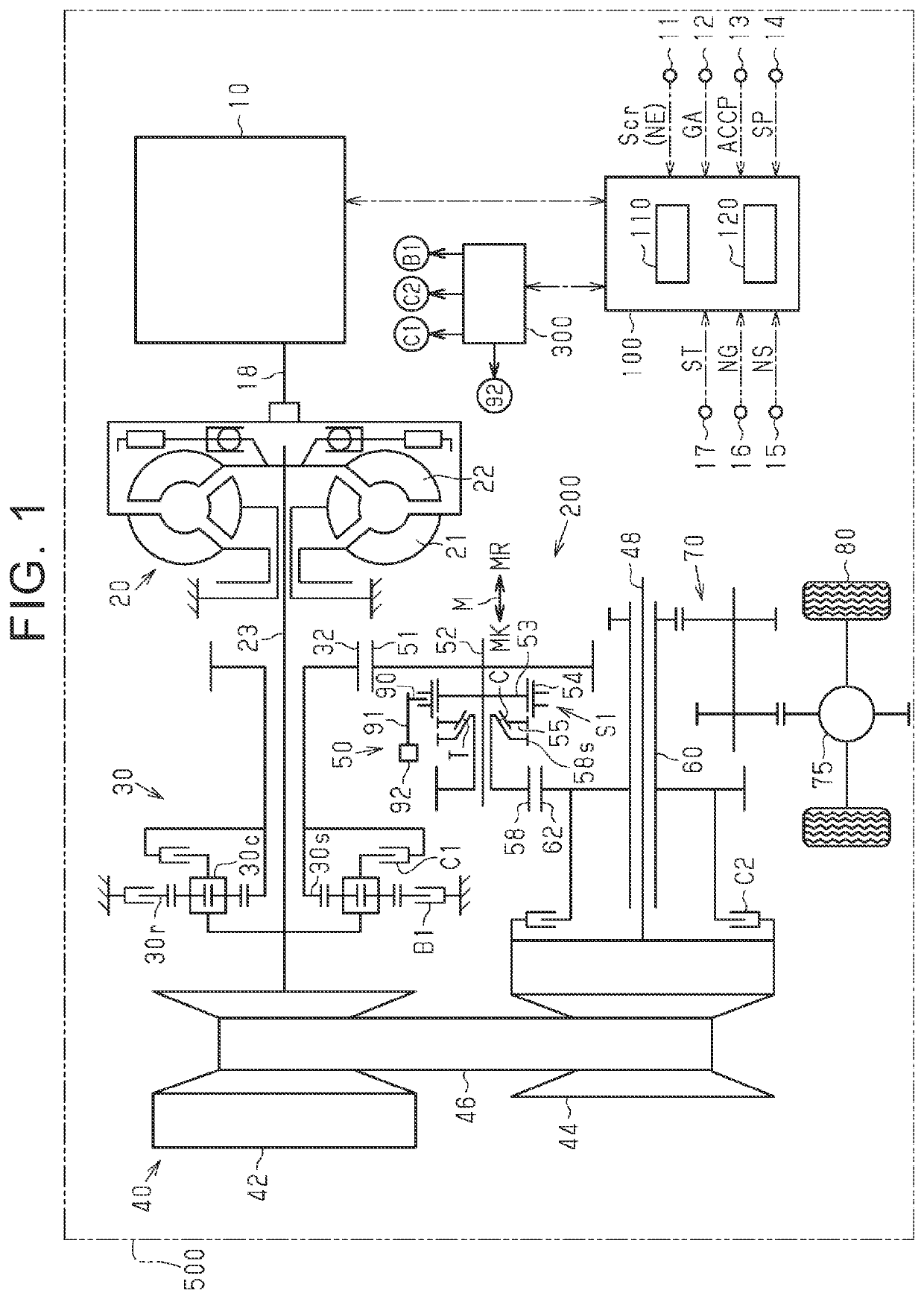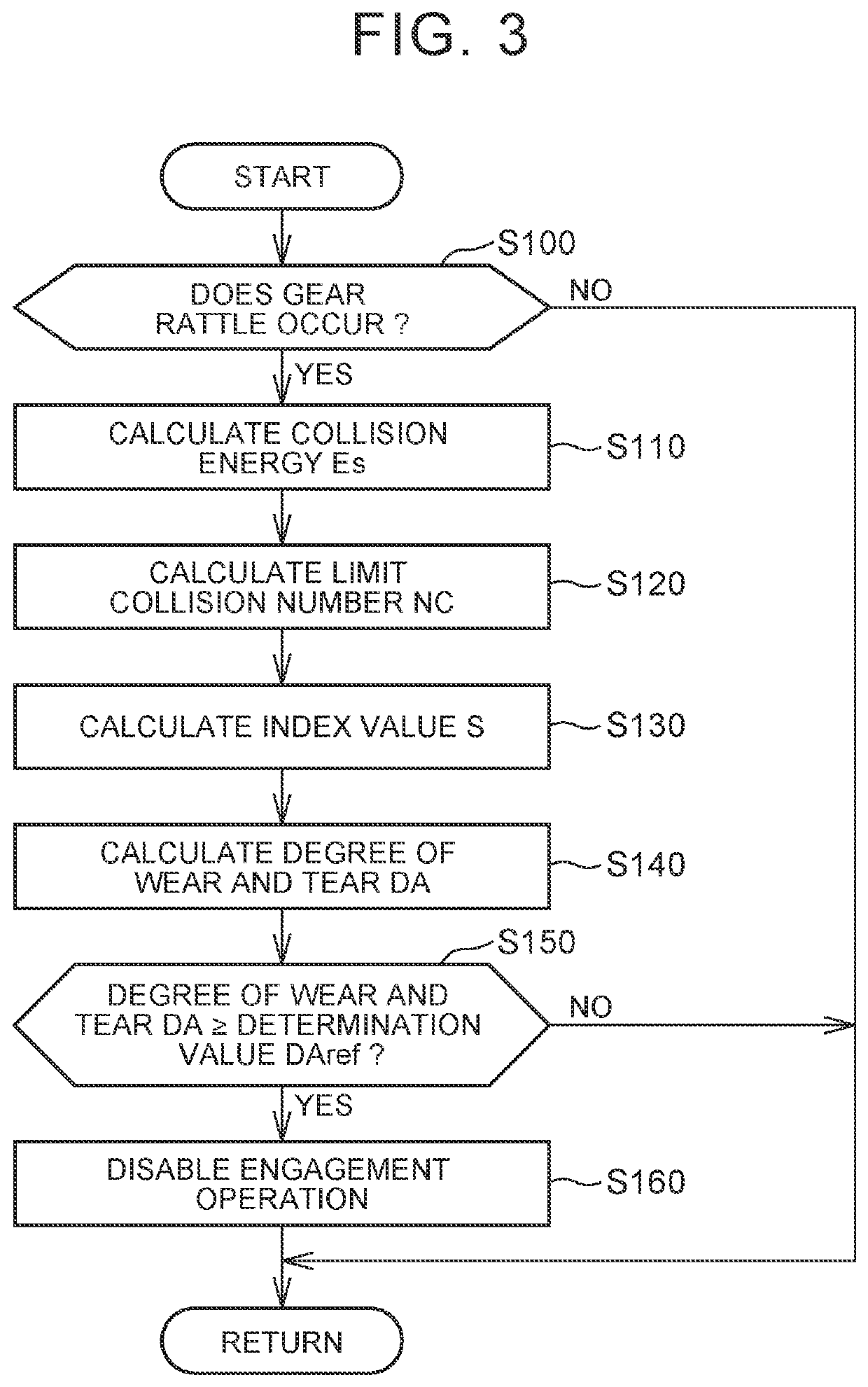In-vehicle control apparatus
- Summary
- Abstract
- Description
- Claims
- Application Information
AI Technical Summary
Benefits of technology
Problems solved by technology
Method used
Image
Examples
Embodiment Construction
[0020]Hereinafter, an embodiment of an in-vehicle control apparatus will be described with reference to FIG. 1 to FIG. 5. As shown in FIG. 1, a vehicle 500 includes an internal combustion engine 10 and a powertrain 200 that transmits the output torque of the internal combustion engine 10 to drive wheels 80.
[0021]The powertrain 200 includes a torque converter 20, an input shaft 23, a belt-type continuously variable transmission 40, a switching mechanism 30, a gear transmission mechanism 50, an output shaft 60, a reduction gear 70, a differential gear 75, the drive wheels 80, and the like. The torque converter 20 is a fluid transmission device to which a crankshaft 18 of the internal combustion engine 10 is connected. The input shaft 23 is connected to the torque converter 20. The belt-type continuously variable transmission 40 is connected to the input shaft 23. The switching mechanism 30 is connected to the input shaft 23. The gear transmission mechanism 50 is connected to the input...
PUM
 Login to View More
Login to View More Abstract
Description
Claims
Application Information
 Login to View More
Login to View More - R&D
- Intellectual Property
- Life Sciences
- Materials
- Tech Scout
- Unparalleled Data Quality
- Higher Quality Content
- 60% Fewer Hallucinations
Browse by: Latest US Patents, China's latest patents, Technical Efficacy Thesaurus, Application Domain, Technology Topic, Popular Technical Reports.
© 2025 PatSnap. All rights reserved.Legal|Privacy policy|Modern Slavery Act Transparency Statement|Sitemap|About US| Contact US: help@patsnap.com



